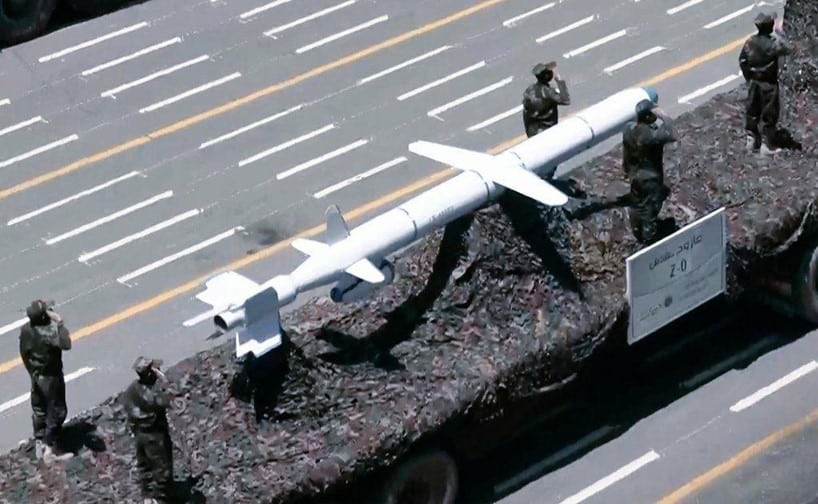Account of the main events in the Israel-Hamas war and hostilities by the Iranian Axis
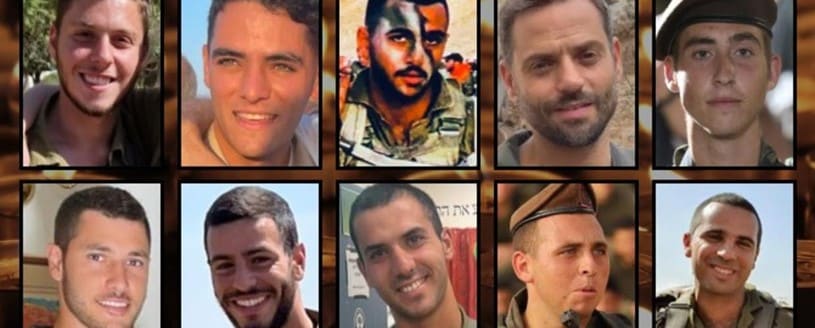
Overview
- Targeting Hamas infrastructure: The IDF has claimed that 3,500 of the 22,000 attacks on the Gaza Strip since the start of the war, took place since the resumption of hostilities on the first of December. IDF fighters are operating in the Gaza Strip against a number of terrorist strongholds—in Jabalia, Jazeera, Khan Younis and Beit Hanoun. The naval forces are also operating in the Gaza Strip’s maritime space, assisting the ground forces and attacking terrorist targets from the sea.
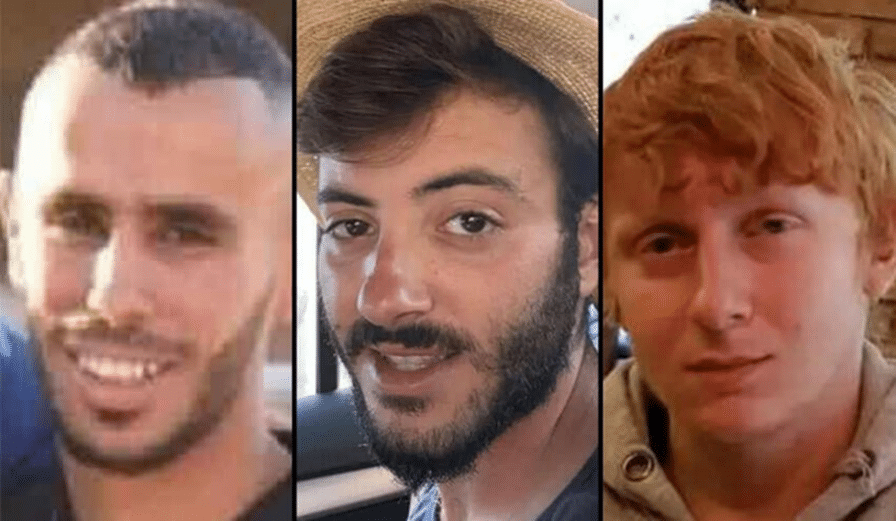
- Tragic hostage killing incident: During combat in Shajai’ya, the IDF mistakenly identified three Israeli hostages who had managed to escape from their captors as a threat. As a result, “the troops fired toward them and they were killed,” the Israeli army said in a statement. The killed hostages were Yotam Haim, Alon Shamriz, and Samer Al-Talalka. According to the initial IDF investigation, the three took several steps to be identified, including taking their shirts off to signal they were carrying no weapons, waved white flags and cried “help” in Hebrew, reportedly also marking “SOS three hostages” on one of the buildings’ rooftops. “Immediate lessons from the event have been learned, which have been passed on to all troops in the field,” it added, e xpressing “deep remorse over the tragic incident”.
Prime Minister Benjamin Netanyahu described the incident as an ‘unbearable tragedy,’ expressing deep condolences to the bereaved families. Despite the tragic incident, Netanyahu stood by the IDF, acknowledging the inherent risks associated with their mission to bring hostages home in an environment where Hamas terrorists routinely dress in civilian clothes and have been known to lure IDF soldiers into ambushes or suicide bombings through fake surrenders. Internationally, White House National Security Council spokesman John Kirby described the event as ‘tragic and heartbreaking.’ The incident is expected to increase further public pressure on Netanyahu to negotiate with Hamas for the hostages’ release.
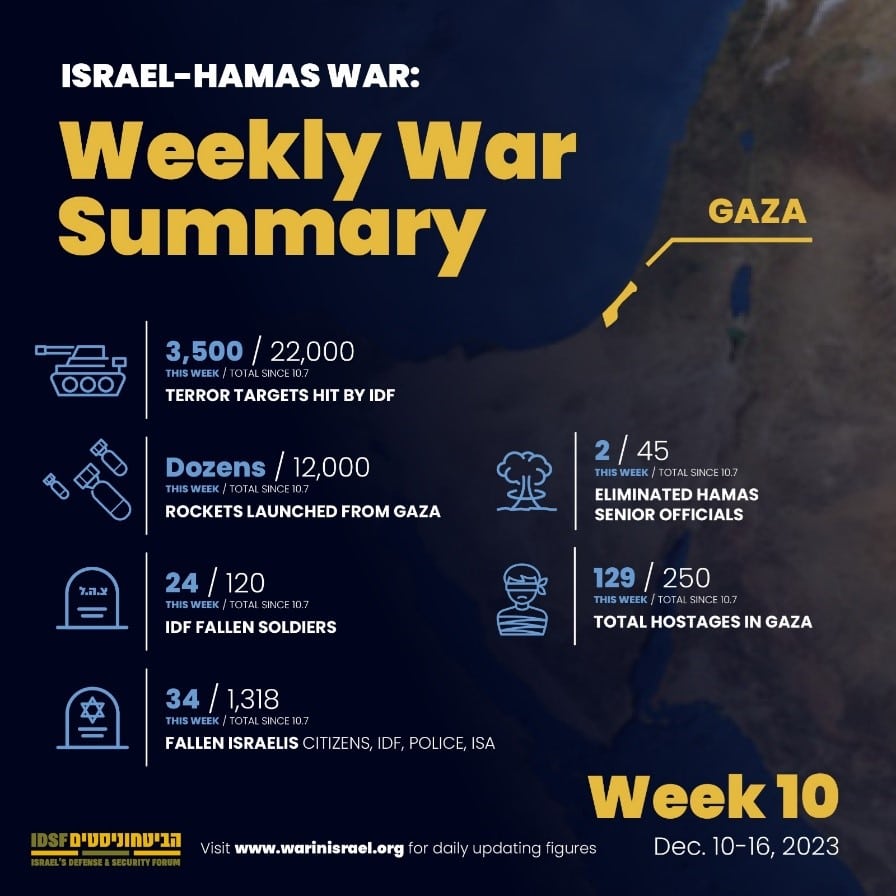
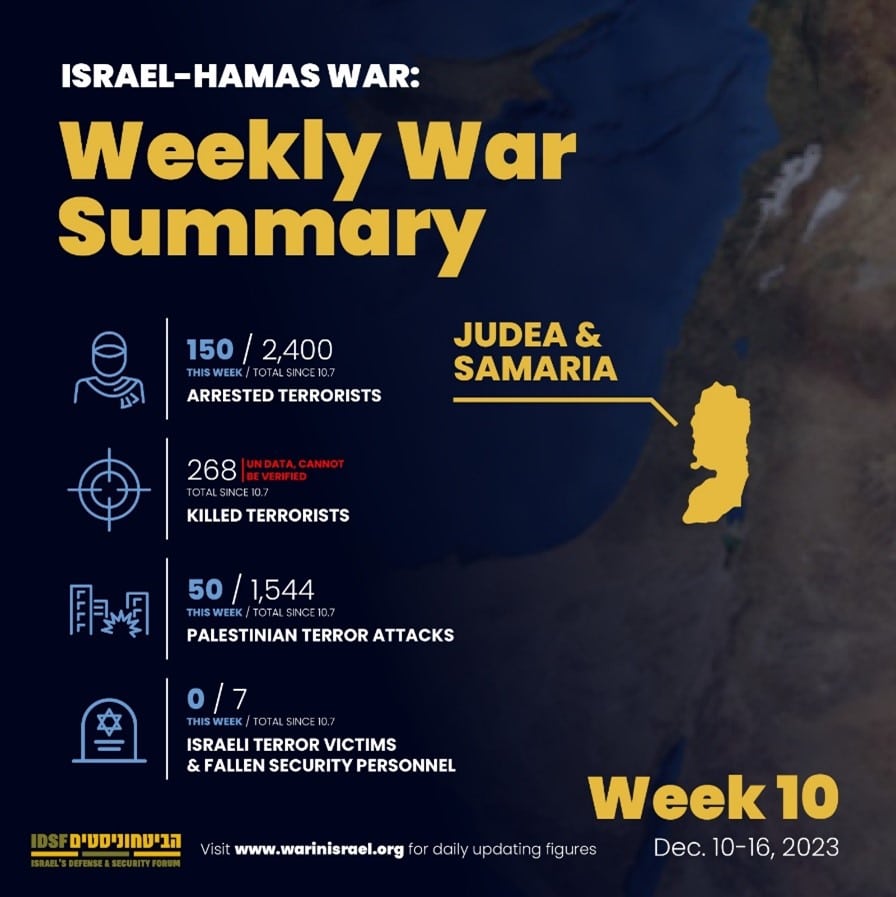
- It also became known that hostage Inbar Heimann was murdered in captivity by Hamas.
- On the world stage, the UN General Assembly called for an immediate ceasefire in Gaza on December 13, and in a highly extraordinary act, United Nations Secretary-General Antonio Guterres invoked Article 99 for only the fourth time in history to convene the Security Council to discuss the developments in Gaza.
As part of its emergency discussions, at the request of Egypt and Mauritania, the assembly approved an immediate humanitarian ceasefire and the immediate and unconditional release of all abductees. At the same time, the UN rejected amendments that condemned Hamas’ October 7th attack, and a separate amendment that would have also condemned the taking of hostages, demanded their safety, well-being and humane treatment in compliance with international law, while calling for their immediate and unconditional release.
- Sanctions on Hamas: The United States and the United Kingdom announced a new series of sanctions against more than a dozen senior officials and associates of Hamas and Islamic Jihad who are moving funds of the terrorist organizations abroad. This is the fourth time sanctions have been imposed on Hamas since the October 7 attack. Among the figures included in the list are Nizar Awadallah, Ahmed al-Davik (a Hamas treasurer based in Algeria), and the deputy secretary general of the Palestinian Islamic Jihad (PIJ) based in Syria, Akram al-Ajouri.
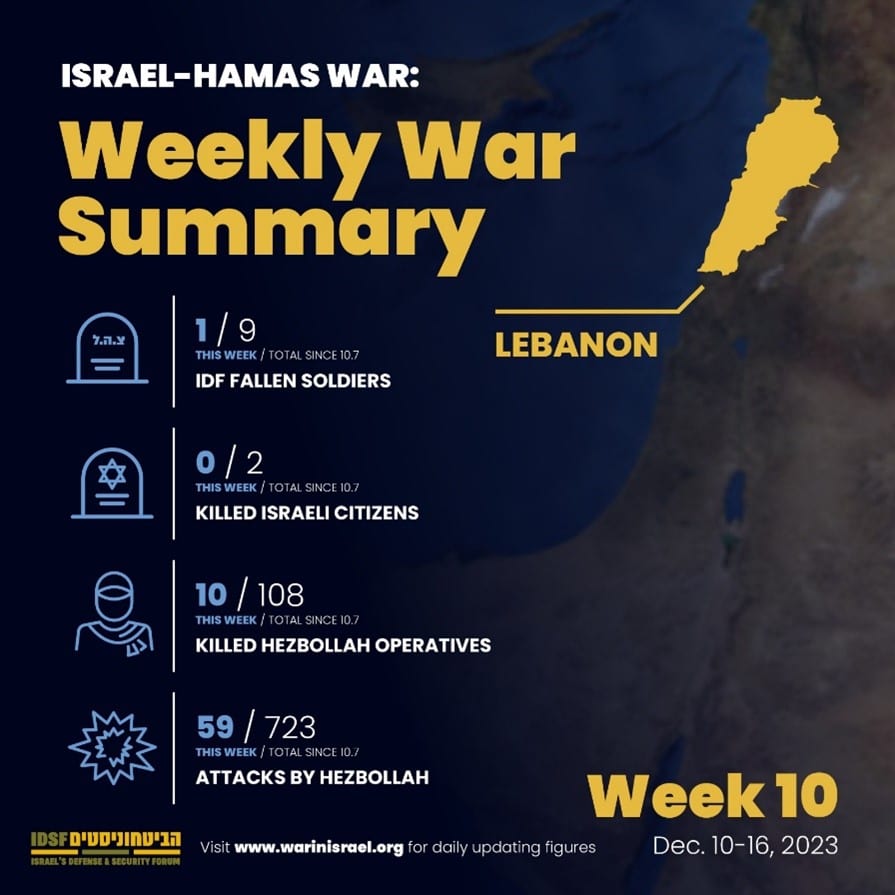

- Global Jihad: An attack on Jewish and Israeli targets planned by six Hamas operatives was uncovered in Denmark and another in the Netherlands. National security threat levels have risen across Europe since the October 7 attacks. However, the terrorist threat level given by the National Security Headquarters for Combating Terrorism in Denmark remained at the lowest level 1 in spite of this.
The planned attack in Denmark comes after an attempted attack on Israelis by Iranian militants in Cyprus. In September, Head of the Mossad David Barnea said 22 attacks against Israelis and Jews, initiated by Iran, were thwarted around the world, and sent an official warning to Iran against continuing to pursue this path, threatening to strike Iranian leaders “in the heart of Tehran”.
Hamas activity was also thwarted in Germany. According to German authorities, the four detainees captured in Berlin and Rotterdam were Hamas operatives who were working in a joint cell and had access to weapons.
The prosecutor’s office in Berlin accused the four suspects who were arrested of having close ties to the Hamas military, and that one of them, Abdel-Hamid A., was working for senior Hamas officials in Lebanon and who ordered him to find weapon sources. It is suspected that the weapons intended for Berlin were to be used for a potential attack against Jewish institutions. If this suspicion is confirmed, this would be the first ever terrorist attack that Hamas has planned to carry out in Germany.

- In Yemen, the Iranian proxy Houthis continue to make threats and conduct attacks. The global freedom of navigation is now under legitimate threat following the Houthis’ targeting and takeover of ships in the international waters of the Bab El Mandeb Straits, a central nerve of global trade routes. In response, the United States is attempting to organize an international coalition in the Red Sea with the participation of 40 countries, which highlights the fact that the war is not merely a local Israeli-Hamas conflict, but has broad international implications as well. The Iranian Defense Minister responded as follows: The United States will face major problems if it wants to establish an international force in the Red Sea, the Red Sea is considered Iran’s territory and no one can navigate there.”
For Israel, as well as for Egypt that relies heavily on Bab El Mandab as a trade route leading to its critical Suez Canal, it is unacceptable not to have freedom of navigation in the Red Sea, or for the Iranians to demand that no other force (from the Allied forces) be militantly deployed in the Red Sea. Immediate international action, both military and diplomatic, must be taken to remedy this situation.
The American lackluster response on this subject is accompanied by the largely muted reaction of the aggression of Iranian militias on American bases in Iraq and Syria. The Americans have been attacked more than 130 times in the past two months. It is possible that the US is avoiding a powerful response for the time being in order to re-establish deterrent forces in the region, and even to prevent this conflict from spinning out of control and potentially instigating a legitimate world war.
- Lebanon: The IDF has completed an extensive series of attacks against Hezbollah targets in Lebanese territory, among them, terrorist infrastructures, launchers and military compounds of the organization. The IDF released statements warning Hezbollah that continued attacks will force Israel to destroy one of the largest power stations in Lebanon.
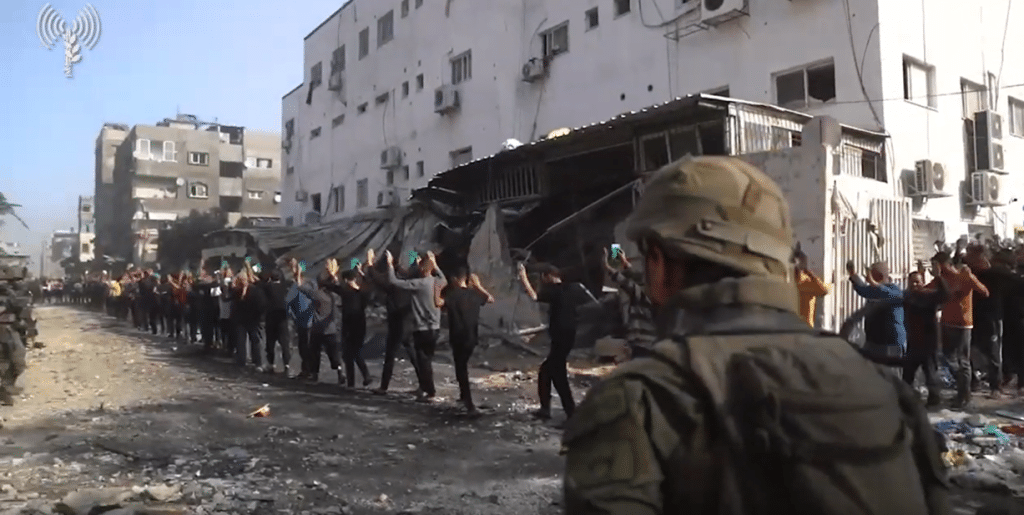
(Credit: IDF Spokesperson)
Gaza Strip
- The number of rockets launched into Israel this week has increased significantly, although it can be assumed that the continuous activity of the IDF in the Gaza Strip is causing a significant depreciation of Hamas’s ability to launch from the ground.
- The IDF reported this week that 105 Israeli soldiers have fallen in Gaza since the beginning of the ground maneuver.
- A survey published this week showed ongoing support for Hamas’s massacres throughout the Gaza Strip, Judea and Samaria, despite the massive destruction caused by the massacres.

- Since the establishment of the al-Mawasi humanitarian zone, Hamas has launched116 rockets from there, of which 38 of those rockets have fallen within the Gaza Strip.
- Soon the IDF anticipates ending the heavy fighting in Gaza City’s Sheja’iya neighborhood with the complete conquering of Sheja’iya, led by the Golani Brigade. Fierce battles continue there, above ground and underground.
- Hundreds of terrorists have already been eliminated and hundreds have surrendered, which provides invaluable and revealing intelligence.
- UNWRA school bombing: This school was being used as a Hamas military headquarters. The school had previously been used to indoctrinate children into terror, instead of its intended purpose set out by the United Nations of promoting human rights.
- Hamas conducted a complex, multi-part ambush targeting an Israeli patrol and quick reaction force in Sheja’iya’s “kasbah” on December 12.
- Over 250 targets were attacked on December 13. A terrorist squad was eliminated that was on its way to launch rockets towards Israeli territory in Shejai’ya.
- IDF fighters from the 460th Brigade Combat Team and Shin Bet fighters arrested over 70 terrorist operatives on December 14 who left a hospital in the Gaza Strip and took them for further investigation by the Shin Bet and Unit 504 in the Intelligence Division.
- A combined combat team from the 53rd Armored Battalion, including Golani and Engineering forces, engaged in the cleansing of the Kasbah in the northwest of the Azov neighborhood. Most of the compound was then abandoned apart from several buildings where Hamas terrorists remained.
- The first force, with four Israeli fighters, was hit and continued to fire at the remaining occupied structures. Senior commanders came to the scene and ultimately, ten soldiers were killed in battle. This event entailed unusually heavy losses for the Golani forces and ushered in wide support throughout Israel.
- The Air Force attacked several launch sites throughout the Gaza Strip. Soldiers of the 162nd Division in Jabaliya, in cooperation with the soldiers of the 636th Collection Unit of the Border Protection Corps, identified and destroyed a launch site while launching rockets towards the city of Sderot.
- Duvdevan fighters raided a building of Hamas terrorists and located about 250 ready-to-use rockets, mortars and RPG missiles. Fighters of the Givati Brigade destroyed a military equipment factory and found hundreds of grenades, rockets and LA missiles.
- Israel has begun pumping salty seawater into Gaza to flood Hamas tunnels, according to US officials.
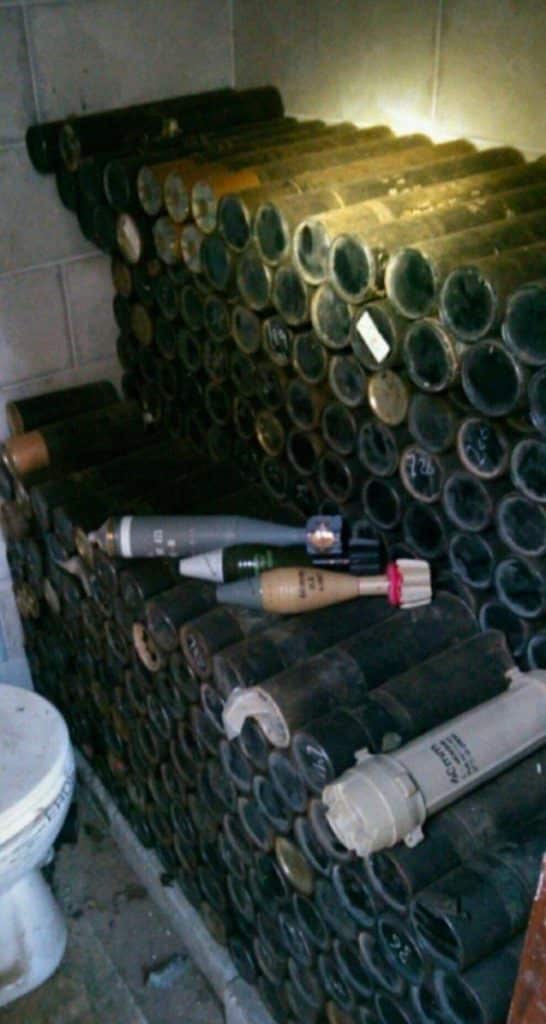
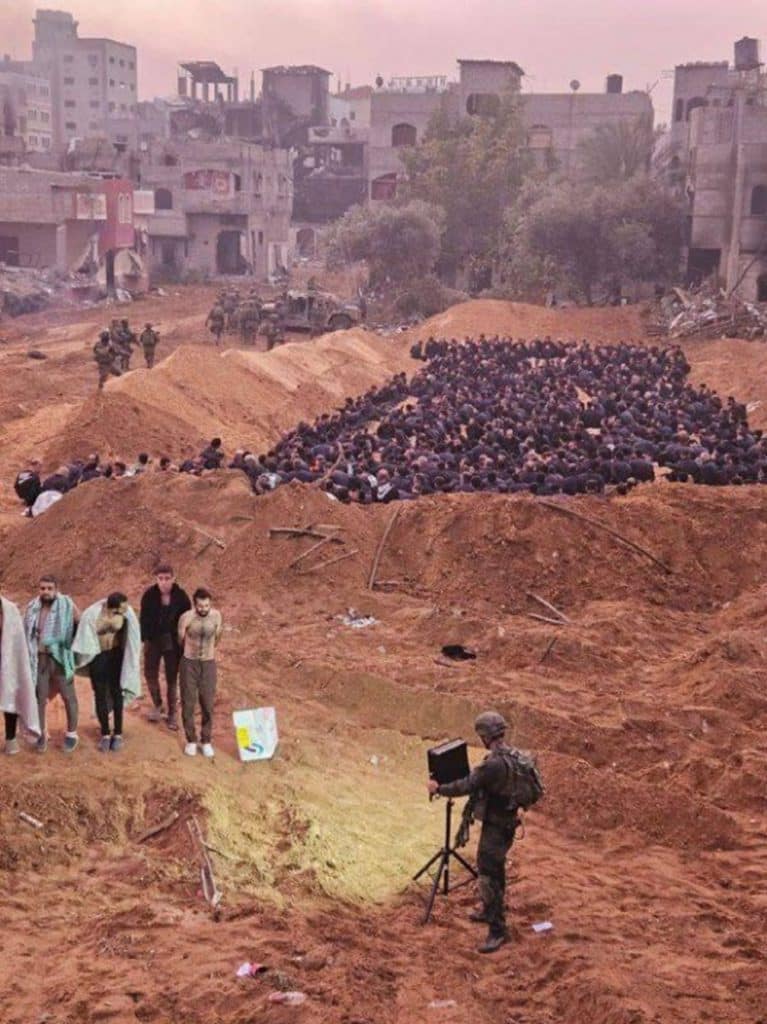
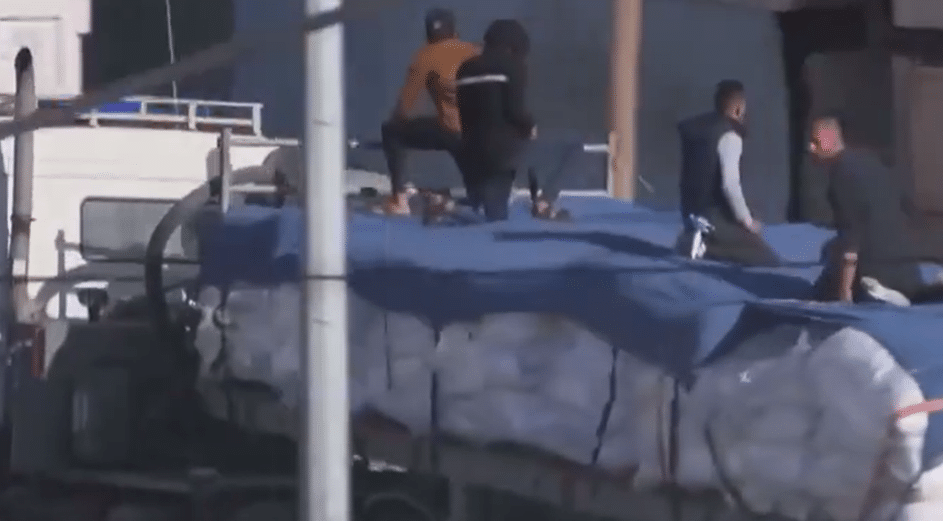
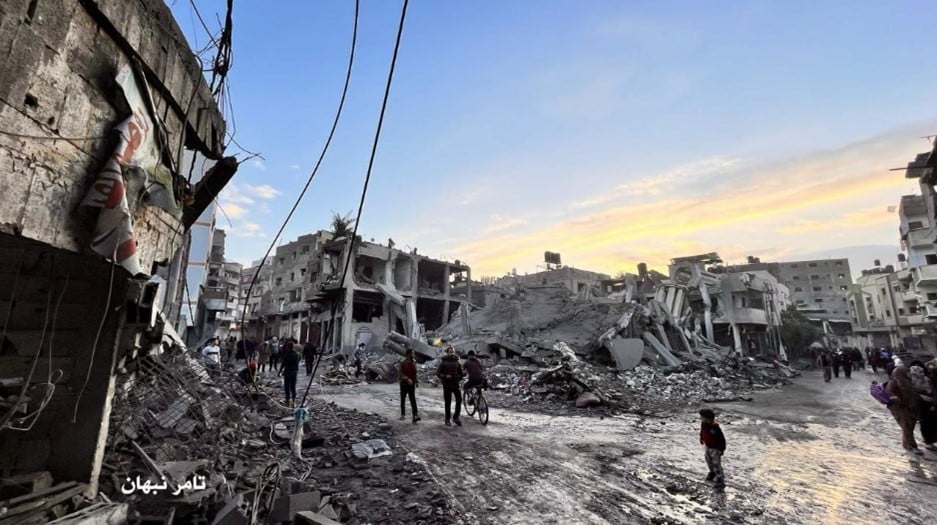
Judea and Samaria
- The IDF has launched an extensive 60-hour operation in Jenin, the most comprehensive of its sort since the 2002-2005 Defensive Shield operation with over 1,400 troops.
- The IDF, the Shin Bet and the Border Police under the command of the Menashe Brigade worked together with engineering forces to uncover IEDs buried under the roads intended to harm our forces. In addition, they located and destroyed a laboratory of ready-to-use explosives.
- Remote manned aircraft attacked a group of terrorists that drove cargo and endangered our forces, and so far, weapons, ammunition and cargo laboratory have been destroyed.
- Over 400 buildings have been searched and 117 wanted persons had been arrested – 7 of them affiliated with Hamas. Many weapons and ammunitions were confiscated and a number of underground shafts were located. A large amount of terrorist money and over 40 illegal vehicles were confiscated in the village of Turmus Aya. At least 12 terrorists were eliminated and about 10 houses were bombed. There were two airstrikes.
- Until the operation, over 2,150 terrorists were detained in Judea and Samaria, and over 220 were eliminated.
- Hamas’ “Islamic Bloc” student association in the Hebron University continued with psychological warfare, putting up a post which read: “without a conditional exchange (prisoner exchange deal), they will not leave alive.”

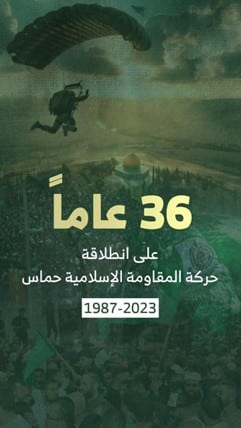
Mahmoud Abbas’ Fatah continues to praise terrorists
- In a supposedly official proclamation issued through PA channels and the Fatah movement, national pride was expressed over the Palestinian security personnel who were killed while targeting IDF forces and civilians in recent days.
- In the long accolades list of “heroes of the collision and the lions of the field, the owners of the sniper and the rifle,” there were dozens of officers and senior brigadier generals who took part in terrorist attacks and fighting against IDF forces, as well as honoring prisoners released from Israeli prisons as part of the Israel-Hamas hostage deal.
- December 15 was Hamas’ 36th Inauguration Anniversary Day where Hamas used the hashtag #عام36, referring to milestones in the organization’s history including the first Intifada and the October 7 attack. By taking pride in its “accomplishments”, especially during this period, Hamas attempts to win hearts and mind of the Palestinian street.
- In the latest poll by Khalil Shkaki’s PCPSR, 82% of Palestinians in southern Gaza believe the Hamas attack on October 7 was justified.
Lebanon
- There has been a significant increase in the pace and force of IDF attacks in Lebanon. The IDF has completed an extensive wave of attacks against the targets of the terrorist organization Hezbollah in Lebanese territory, among them, terrorist infrastructures, launchers and military compounds.
- In addition, the IDF forces attacked a terrorist squad that tried to launch anti-tank missiles towards Israeli territory in the Zar’it area. Air force strikes destroyed an entire neighborhood in the town of Itatron in southern Lebanon.
- The Washington Post alleged today that Israel is using white-phosphorus bombs, or white-fossil, bombs against targets in Lebanon. U.S. National Security Council spokesman John Kirby confirmed that the use of arsenic bombs, some of which are U.S. manufactured, is not prohibited by international law unless it is used in urban areas where there are civilians who are not involved in the fighting.
- It seems that the IDF made use of these measures mainly in open areas covered with tangled and thick vegetation where Hezbollah and its Radwan force have established attack posts, an effective measure to burn vegetation and reveal fortified military positions that take advantage of the topography to attack IDF posts with measures such as anti-tank missiles.
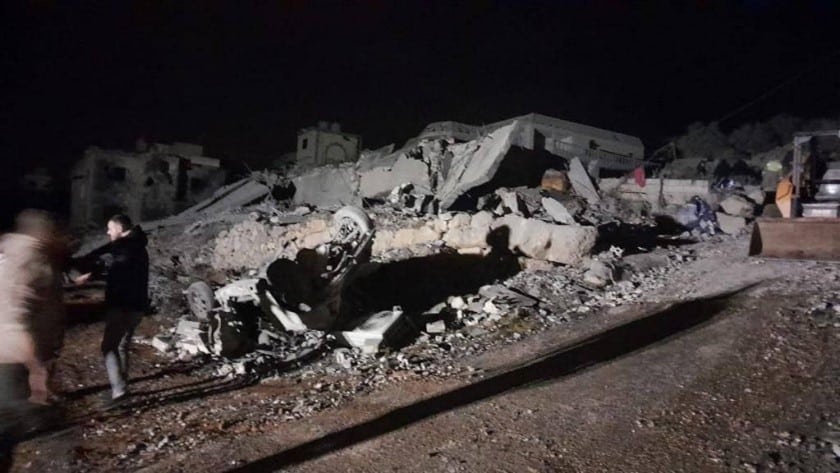
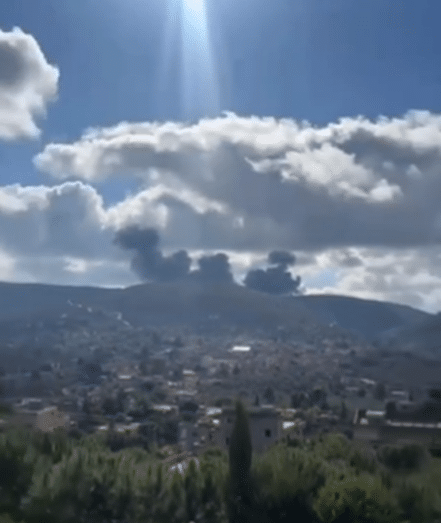
Iraq and Syria
- Iranian and Iraqi judicial officials discussed prosecuting the “perpetrators” of the January 2020 US airstrike that killed then-IRGC Quds Force Commander Major General Qassem Soleimani as part of the broader Iranian effort to undermine anti-Iran elements of the Iraqi Security Forces.
- Three missiles were identified from Syrian territory heading toward Israeli territory, two of which landed in Syrian territory and another fell in open fields. The IDF attacked the source of the shooting.
- A coalition of Iranian-backed Iraqi militias claimed responsibility for attacks on US bases in Iraq and Syria.
- In addition to the aforementioned threats by the Iranians, the Houthis may also work to block marine trade routes in various ways.
Global Jihad
- In its weekly ‘Al-Naba’, ISIS conveys its criticism of Hamas, as an organization that it claims has renounced Islam, its laws and is even training the Shiites.
- Despite ISIS’s support for the Palestinians, the organization resents Hamas for being a Sunni organization that joins the apostate Shiites and collaborates with Iran as well as the Hamas conflict against ISIS in the Sinai.
Yemen
- There have been multiple Houthi attacks against ships traveling through the Red Sea on their way to Israel. Houthi spokesman Brigadier General Yahya Sarie this week said: “We will continue to prevent ships from reaching Israel until aid is brought into Gaza.”
- The commercial tanker “STRINDA” was attacked in the Red Sea on Monday at 23:00 by what is believed to be a Houthi anti-ship cruise missile.
- The attack took place about 100 kilometers north of Abu al-Mandab fortress. The US destroyer Mason responded to the attacked ship’s emergency call but was were unable to shoot down the Ansar al-Ala missile.

- On December 12, the Houthi leadership continued to issue threats including the targeting of the Haifa and Ashdod ports.
- The Houthis have developed many types of sophisticated anti-ship missiles that have the ability to sink ships. The Houthis conducted an anti-ship cruise missile attack on the Norwegian tanker STRINDA around the Bab al Mandeb on December 11.
- The Houthis fired two other anti-ship ballistic missiles targeting a vessel carrying the flag of the Marshall Islands on December 13.
- The Houthis presented a new long-range ‘Quds Z-O’ cruise missile of alleged local Yemeni production this week, which has not yet entered service, with a range of 2000 km. Their telegram channel said the missile was “capable of hitting land targets within 2,000 kilometers of the northern Indian Ocean or Tel Aviv.”
- President Isaac Herzog said on December 13 that the Houthis “crossed a red line” in the attack in the Red Sea.
